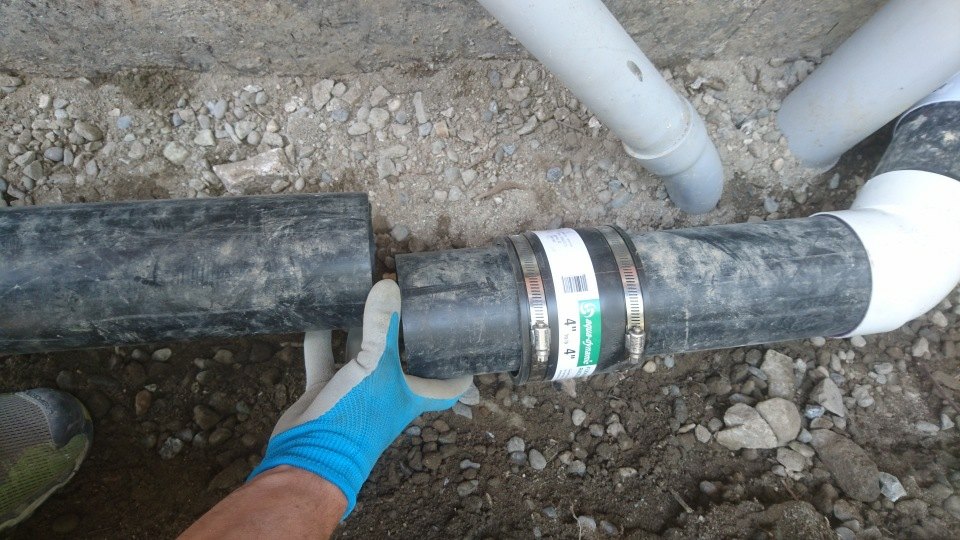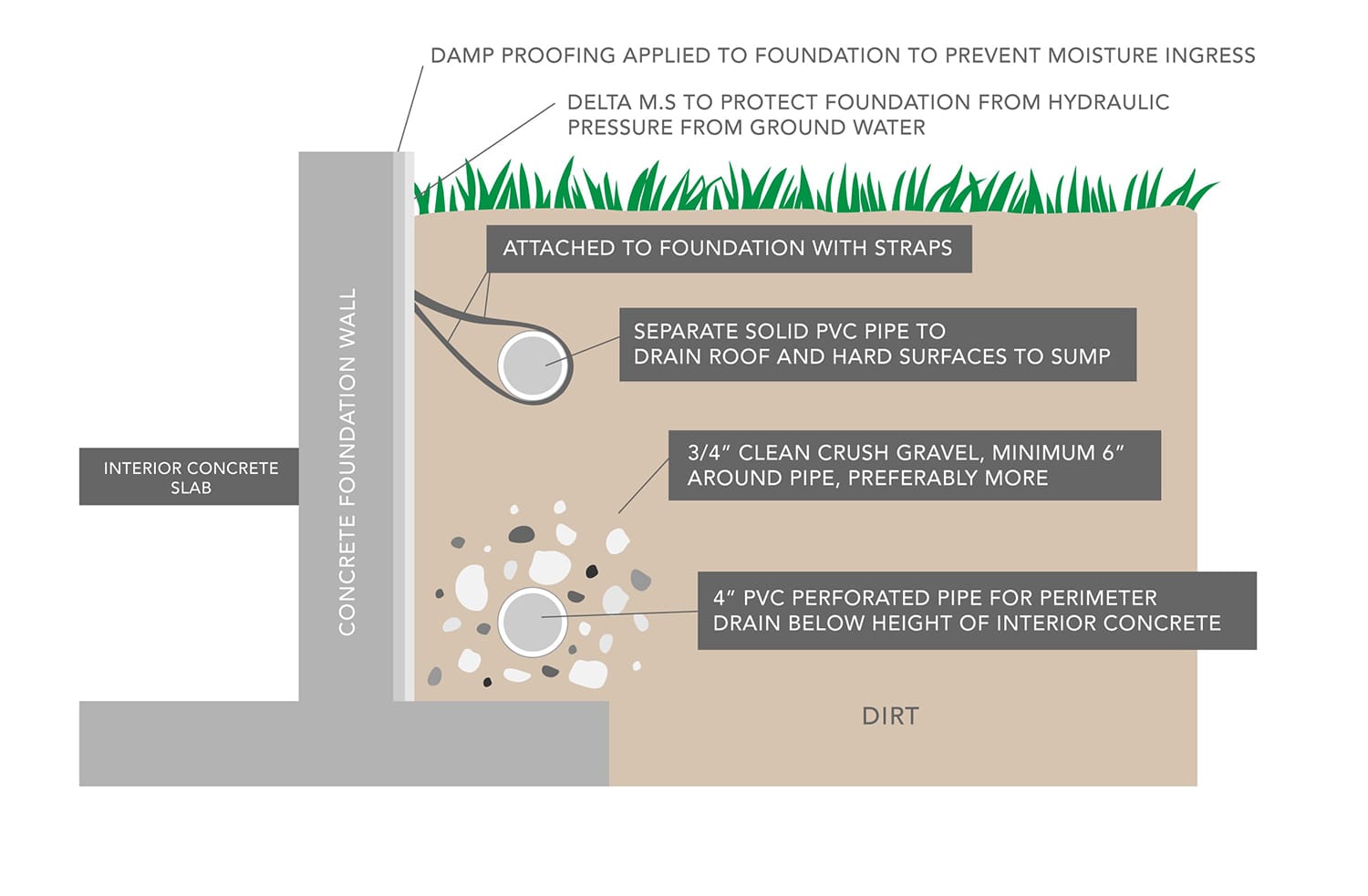What exactly is perimeter drainage?

We're glad you asked. It isn't something you see, but it is what keeps your home dry and healthy.
Water around your house comes from two different areas: rainwater and groundwater. Rainwater that is collected by your roof flows from your gutters into a solid pipe system and then into a concrete catch basin called a sump. Water that is in the ground is collected by perforated pipes surrounding your home’s foundation. These pipes direct groundwater into the sump. From the sump, the water flows into the municipal storm water system.
Most home foundations are made of concrete, which is porous and can allow moisture from the ground into your home. This can lead to the growth of mold, which can be a major health concern.
On top of an effective drainage system, it is important to apply a sealant called ‘damp proofing’ to the foundation wall to stop this moisture ingress, and a membrane called ‘Delta M.S.’ to resist the water's pressure against your foundation wall.
The diagram below details the important ‘Elements’ of your perimeter drainage system.

If you are asking yourself the following questions, contact us and we will provide the answers!
- Why is there dampness in my basement?
- Why is there standing water in the yard?
- My grass seems very soft – what is causing this?
- Where is the white film on my concrete walls coming from?
- There seems to be a lot of water pooling next to the down spouts – what do I do?